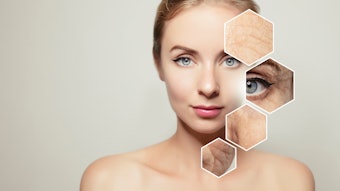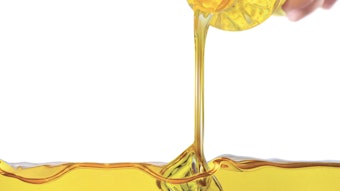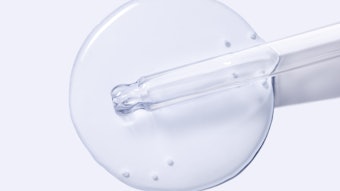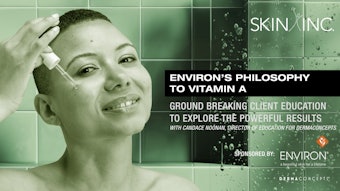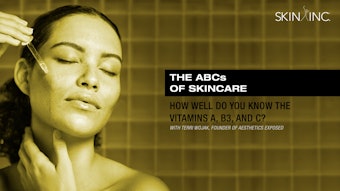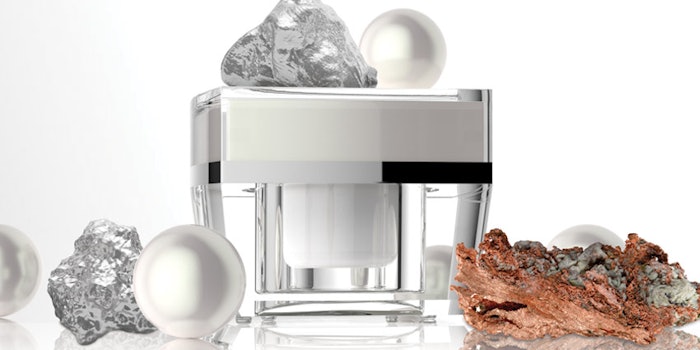
Who doesn’t love the warm, soothing embrace of bubbling hot springs or therapeutic mud baths? These types of mineral-rich locales are revered for their healing, calming and rejuvenating powers for mind and body. In fact, cells can’t survive without minerals. In the skin care realm, the importance of minerals is sometimes overlooked. When it comes to promoting healthy, glowing skin, minerals quietly yield their place in the limelight to bossy, swaggering ingredients like growth factors, stem cells and peptides.
But take note, minerals are going to take center stage. Even in small percentages, minerals provide mighty skin care benefits by reducing inflammation, enhancing cellular health and regeneration and accelerating healing, just to name a few.
The Many Faces of Minerals
Scientific and medical studies of anti-inflammatory and healing properties of minerals show that the proper balance of topically-applied minerals leads to long-term improvement in the appearance of skin. Why? Because minerals play a multitude of roles contributing to cellular health and skin regeneration. So, how do minerals suit each client’s unique skin signature?
1. Cell messengers and energizers. Minerals like calcium, copper, magnesium, potassium, silver and zinc communicate with skin cells to regulate and boost skin’s natural functions, like powered-up batteries that keep skin revitalized and healthy. They help transfer nutrients across cell membranes, reassembling amino acids from damaged proteins that are recycled into the skin’s essential proteins like collagen and elastin. As a result, sagging, aging skin transforms and becomes firmer and more elastic.
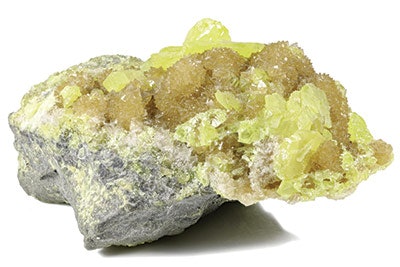
2. Anti-inflammatory, wound healing agents. An essential step in healing and repair is reducing inflammation. Minerals like magnesium, manganese, selenium, sulfur and zinc soothe skin irritation and reduce redness, swelling and pain. These minerals defend against microbial infections, DNA damage and skin conditions like acne, eczema and psoriasis. Copper and silver are popular in medical spas to accelerate healing after procedures that include microneedling, dermaplaning, chemical peels, microdermabrasion, intense pulsed light, lasers, radio frequency and protein-rich plasma treatments. Post-care treatments with mineral-based products lower the risk of scar tissue and prevent or reduce the appearance of post-inflammatory hyperpigmentation.
3. Free radical fighters. Minerals like selenium are superheroes with antioxidant powers that scavenge and neutralize free radicals, strengthening skin and defending it from free radical damage. Other minerals partner up with antioxidants, such as glutathione and superoxide dismutase. Boosting and supporting antioxidants is paramount in protecting skin from environmental damage that leads to visible signs of skin aging.
4. Keepers of pH balance. Since minerals help transport nutrients into and out of cells, they prevent skin from becoming too acidic or too alkaline. Copper, magnesium, manganese, selenium and zinc are examples of minerals that maintain the ideal pH balance of skin, which is usually between five and six on a scale of one to fourteen. In this way, minerals help rid skin cells of toxins, while protecting skin against dryness, germs and bacteria. They also keep skin in the optimum environment to accelerate wound healing and renewal.
5. Microcirculating moisture factors. Minerals like calcium, magnesium, potassium and sodium function as moisture factors and water-binding agents that prevent transepidermal water loss. They protect the moisture barrier and maintain and lock in hydration, which is essential in soothing irritated skin and promoting repair. Iron promotes microcirculation by pulling blood, fluid and nutrition from deep within the skin and up into the epidermis for optimal skin health.
Personality Profiles
Here’s a meet-and-greet overview of minerals edging their way into the skin care spotlight.
Copper. “The skin-firmer” is known for its anti-inflammatory, wound-healing properties as well as its teamwork with zinc in promoting collagen synthesis and re-gifting skin with strength and elasticity. It is excellent in post-treatment or anti-aging serums.
Silver. “The post-care champion” provides anti-inflammatory, antimicrobial and antibacterial benefits that promote cell regeneration and skin recovery. It is recommended in post-treatment serums and creams to reduce redness and accelerate healing.
Calcium. “The barrier function repair expert” protects skin from external aggressors and facilitates cell division and skin renewal. Calcium is a moisture-boosting team player in face and neck creams for photo-damaged skin.
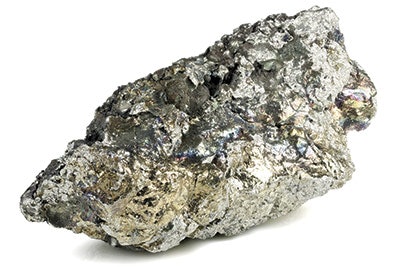
Magnesium. This “spark plug of the skin” provides power to improve cell function and blood flow, boost antioxidant activity and maintain moisture levels. It is ideal in mineral-based toning solutions.
Manganese. “The oxygenator” pumps up oxygen levels in blood for vibrant skin, while activating enzymes and amino acids that give collagen fibers strength and stamina. Manganese is a power player in serums and toners.
Pearl. This “treasure trove of skin-loving minerals” like calcium, magnesium, zinc, selenium and copper inhibits the enzyme tyrosinase to even out skin tone and diminish dark spots. It is a favorite in glow-getting creams and masks.
Potassium. The “great equalizer” maintains fluid balance in skin, which keeps cells hydrated, moisturized and functioning optimally. It is a welcome ingredient in toners and creams to prevent dryness.
Selenium. The “anti-inflammatory superhero” protects skin from UV damage, provides anti-inflammatory benefits for photo-damaged or acne-prone skin and fights free radicals by empowering antioxidants like SOD and glutathione.
Sulfur. This “pore de-clogger” with detoxifying antibacterial properties soaks up excess oil, reduces inflammation and bolsters collagen structure. It is
a game-changer for oily, acne-prone skin, rosacea
and eczema.
Silica. “The smooth operator” supports glycosaminoglycans (GAGs) to keep collagen and elastin fibers bathed in moisture. It supports collagen synthesis, while staving off wrinkle formation and sagging. Silica is perfect in eye creams and moisturizers.
Zinc. “The mighty Z” accelerates wound healing and wards off environmental damage. Like titanium dioxide, zinc protects against reactive oxygen species (ROS) created during UV ray exposure. It is ubiquitous in sun protection as well as post-treatment repair.
Minerals Everywhere
Product ingredient lists also contain minerals in disguise. Herbs, plants, clays and algae are amazing mineral storehouses.
Minerals in plants
The minerals in plant extracts are water-soluble and absorb well into the skin to work their magic. Many benefits of these herbal and plant extracts can be traced to their mineral components:
- Chamomile (magnesium, zinc, iron, calcium) relieves sensitive, dry, inflamed skin.
- Comfrey (calcium, potassium, phosphorus, silica, iron) boasts anti-inflammatory, cell proliferating and healing properties and is known for treating scars.
- Peppermint (zinc, potassium, magnesium, manganese, copper, calcium) has anti-inflammatory, antibacterial and antioxidant benefits to balance oily, acne-prone skin.
- Green tea (potassium, calcium, phosphorus, manganese) provides antioxidant properties to protect against environmental damage.
- Aloe (calcium, magnesium, zinc, chromium, selenium, potassium, copper, manganese) relieves skin irritation, burning and stinging.
- Licorice (calcium, potassium, magnesium, sodium, iron, phosphorus, zinc) reduces inflammation and redness, while brightening skin by inhibiting tyrosinase activity.
- Arnica (magnesium, potassium, calcium) relieves skin irritation for optimal skin renewal.
- Goldenseal (calcium, iron, manganese) has antibacterial and anti-inflammatory properties to decrease skin irritation.
Minerals in clays
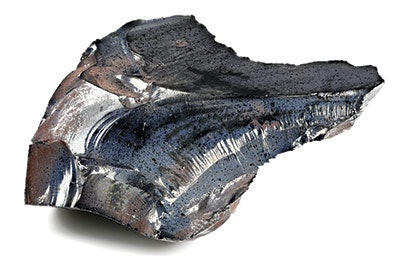
Minerals are key players in clay mask treatments that exfoliate dead skin cells, remove debris and absorb excess oil, while improving circulation and oxygenation of skin.
French green clay (Montmorillonite) boasts copper, calcium, magnesium, manganese, potassium, selenium and silica to eliminate excess oil and attract blood toward the skin surface. It is a good choice for oily, acne-prone, irritated or lackluster skin.
Moroccan rhassoul clay with magnesium, zinc, potassium, phosphorus and iron draws out excess sebum and blackheads. It is effective for reducing the appearance of congested or enlarged pores.
Australian bentonite clay contains calcium, magnesium, silica, copper, iron and potassium, which draw out impurities, absorb excess sebum and battle breakouts. It also absorbs excess sodium and tightens puffy, sagging skin.
China white kaolin clay has magnesium and silica to exfoliate dead skin cells and reduce inflammation. It is ideal for dry or sensitive skin, as it boosts circulation and brightens.
Minerals in algae
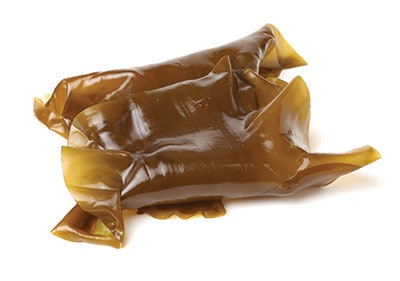
Sea water contains high levels of minerals such as sodium, magnesium, sulfur, calcium, potassium, copper, iron, zinc, manganese, selenium and silver. So, it makes perfect sense that countless varieties of algae, seaweed and microalgae are inundated with moisture-magnifying, skin-loving minerals, too. Marine plant extracts used in skin care include red algae (Porphyra yezoensis, Chondrus crispus, Corallina officinalis, astaxanthin), brown algae (Macrocystis pyrifera, Laminaria digitata, Fucus vesculosus), green algae (Ulva lactuca, Undaria pinnatifida, Enteromorpha compressa), blue-green microalgae (spirulina) and the up-and-coming marine wonder Ascophyllum nodosum (ANK).
Modest But Mighty
In the treatment room (see Mineral Mixology in the Treatment Room) and for home care, minerals are essential in regulating the metabolic function of skin cells, accelerating healing, treating skin disorders and strengthening the skin matrix to slow down signs of aging. Introduce clients to products with minerals that suit their unique skin signature. Lastly, remind clients to include mineral-rich foods in their diet. Caring for the skin from the inside-out as well as from the outside-in is the best way to re-ignite a healthy, ageless glow.



